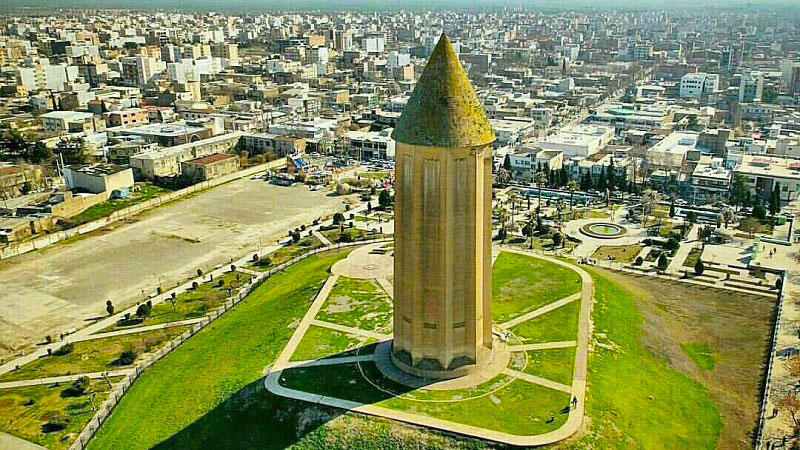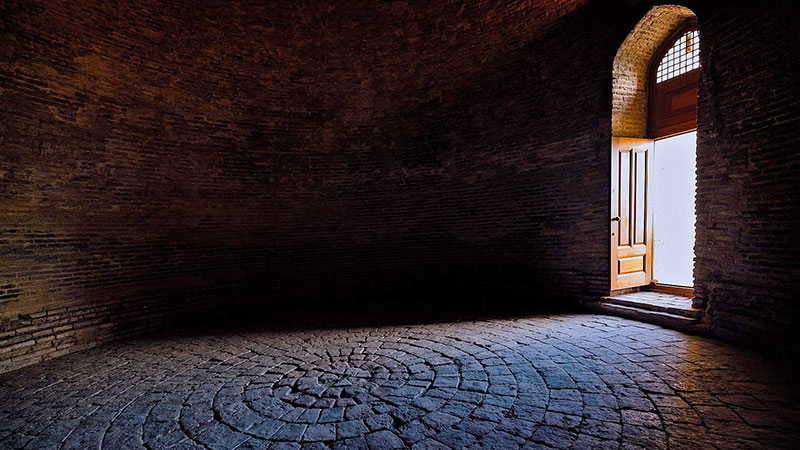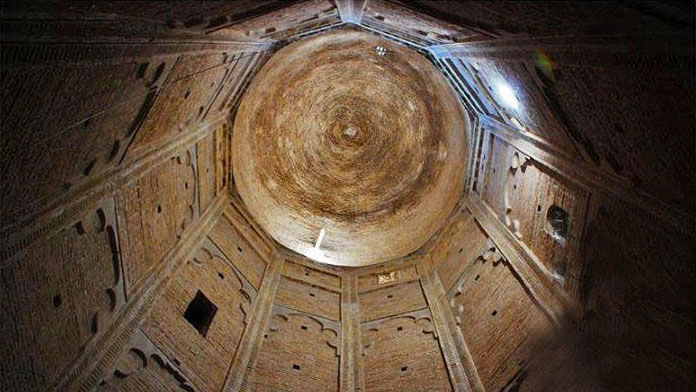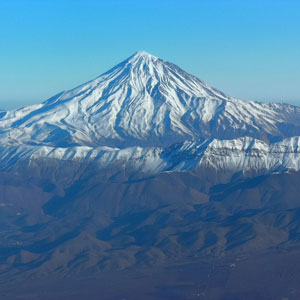 Signin with Google
Signin with Google Signin with Facebook
Signin with Facebook
 Places,History
Places,HistoryGonbad-e Qabus, the Brick Crest on Iran's Heritages

Slowly, a star-shaped dome appears at the horizon, as far as 30 kilometres away. As the travellers progress, the imposing brick tower to which this dome belongs unravelled itself. Standing proudly on a domed hill, the Gonbad-e Qabus dome rises at 72 metres high, overlooking the city down below. For more than 1000 years, the mysterious golden tower has been a lighthouse for merchants travelling on the ancient Silk Road.
The peak of ancient architecture
The construction of Gonbad-e Qabus is nowadays one of the few remainings of the ancient city of Gorgan, sacked by the Mongols in the 14th and 15th centuries. Located in the Golestan Province, in north-east Iran, the city was the centre of power of the Ziyarid Dynasty, during which arts and sciences flourished. Nowadays, the modern town that lays at the feet of the enigmatic tower has been named after it, Gonbad meaning the dome in Persian.
This masterpiece has been ordered in 1006 A.D. by Qabus ibn Wushmagir, one of the most famous Ziyarid kings. This dynasty, which ruled over Persia for 160 years, is known for its implication in reviving the pre-Islamic Persian culture after the Muslim conquest. Qabus ibn Wushmagir was himself both a man of science and literature: astronomer, calligrapher and poet. He had the famous philosopher and physician Ibn Sina, known as Avicenna, the father of early modern medicine, as well as the scholar Biruni at his court.

A mathematician's dream
Gonbad-e Qabus is a stunning example of the application of mathematic principles and sciences in Islamic architecture. It is the very reason why the British writer Robert Byron, who just saw a photograph of the monument, decided to visit Persia in the 18th century. Had this long journey throughout half of the world been disappointing? Not at all, according to what he wrote that Gonbad-e Gabus "ranks with the great building of the world".
What Robert Byron saw, can still be observed today: the stunning fortified tower, entirely built of yellow backed-bricks, is considered as the highest all-brick structure in the world. The best mathematicians and scientists of that time have conceived this masterpiece, based on the geometric formula. The cylinder is an enormous decagon made out of ten separate pieces, shrouded with a conic roof, and forming the golden ratio Phi.
A masterpiece of creative genius
Its dome is double-shelled, with an outer conical roof and an inner hemispheric shell, and its walls are 3 metres thick. Inside the building, a great silence and deep darkness welcome the visitor. The interior is empty; However, it contains the earliest examples of Muqarnas decorative styles, who have later ornate all the most beautiful mosques of Iran and beyond.
Gonbad-e Qabus has survived through the centuries due to the quality of its materials and the cleverness of its architects. Despite having no deep foundations and being located in a region shaken by earthquakes. Another stunning particularity of this building, which demonstrates its creative genius, is its sound reflection. If you Stand on a specific spot facing the single entrance door, a few metres away from the tower, the echo carries back the voices of the visitors standing here.
A tomb, an observatory, and a significant landmark
On top and at the bottom of the tower, a Kufic inscription forming a belt around the structure testifies from the identity of its commissioner, Qabus ibn Wushmagir. It reads that "This tall palace for the prince Shams ul-Ma'ali, Amir Qabus ibn Wushmgir ordered to build during his life, in the year 397 the lunar Hegira, and the year 375 the solar Hegira". Nonetheless, few records allow us to know the real purpose of this tower.

Most believe that it was above all a tomb for the great Ziyarid ruler. It has been said that the sultan's body was put in a glass coffin then suspended from the ceiling of the tower. Yet, no trace has been found in the excavations, but the spirit of the Qabus ibn Wushmgir is forever linked to this tower. Other people think that he might have planned to use this structure as an observatory, knowing the relations between the king and scientists, as well as his passion for the mysteries of the stars.
Whatever was the real usage of Gonbad-e Qabus, what is known for sure is that the tower has been, and remains, a famous landmark of this region. Furthermore, it has been a source of inspiration and a prototype for many sacral buildings and similar towers in Iran, but also in Anatolia and Central Asia.


